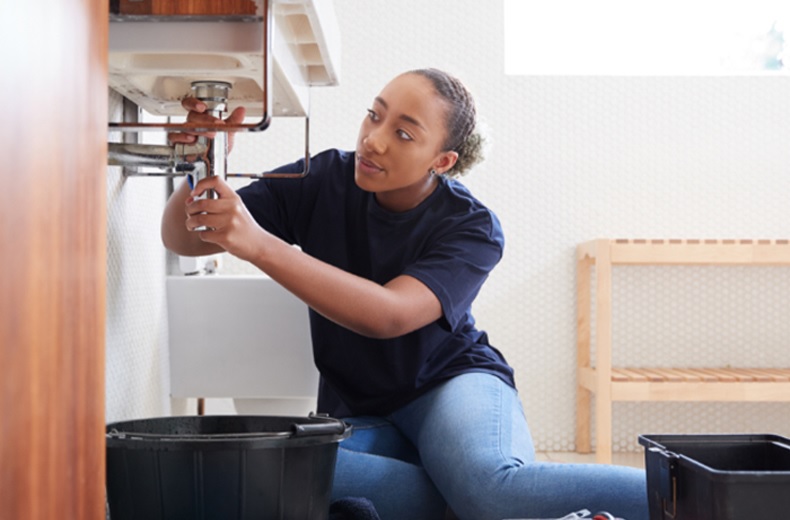Top-Rated Plumber Alabaster AL Ready to Offer You Anytime
Top-Rated Plumber Alabaster AL Ready to Offer You Anytime
Blog Article
A Detailed Guide to Effective Hot Water Heater Installment for Optimum Efficiency
Beginning on the task of mounting a water heater is an endeavor that demands precision and an organized approach for attaining ideal performance. As you proceed, the complexities of linking water supply lines and setting up reliable electric or gas connections wait for, appealing insights into ensuring performance and integrity.
Choosing the Right Hot Water Heater

Next, think about the size and ability of the water heater. It's important to examine your house's warm water demands, which can differ based upon the variety of passengers and their usage patterns. A device that's too tiny might cause insufficient warm water, while an oversized design could lead to unneeded energy intake.
Effectiveness scores additionally play a critical role in selection. Look for hot water heater with high Energy Aspect (EF) rankings, indicating exceptional performance and minimized energy use. Tankless designs, though typically much more expensive upfront, deal considerable power financial savings over time due to their on-demand heating capabilities.
Preparing the Installment Location
Before mounting a new water heating unit, precise prep work of the setup location is crucial. It's essential to measure the space carefully to suit the water heating unit's measurements, making certain adequate clearance around the system for reliable operation and maintenance.
Following, get rid of any type of debris, dirt, or obstructions from the site to produce a clean setting. Examine the flooring for stability, as the water heating unit will need a solid, level surface to operate successfully. If required, mount a drip frying pan under the device to capture potential leaks or spills, protecting against water damages to the surrounding location. In areas susceptible to seismic activity, take into consideration mounting seismic straps to secure the heating system securely in place.
Furthermore, make sure that all necessary tools and materials are on hand prior to beginning the installation. This includes items such as wrenches, screwdrivers, a degree, and any type of extra equipment needed for safeguarding the heater and mounting. A well-prepared installation area establishes the foundation for a successful water heater arrangement, enhancing performance and safety.
Connecting Water System Lines
When linking water lines to your recently set up hot water heater, it is crucial to make certain that all connections are leak-free and safe and secure to preserve effective procedure and stop water damages. Begin by identifying the cool and warm water lines. The chilly water inlet is commonly marked with a blue tag or a "C", while the warm water outlet is noted with a red tag or an "H".
Use versatile water heater adapters to assist in a simpler setup procedure. Before connecting the ports, position a plumbing technician's tape around the threaded ends of the water heating unit's inlet and electrical outlet pipelines.
Once connections are in place, slowly activate the main supply of water shutoff. Check each connection for leaks by visually checking and really feeling for moisture. Tighten up connections as essential, and make certain the stress alleviation valve is correctly mounted, protecting against extreme stress build-up.
Establishing Electrical or Gas Links
Correctly setting up the electrical or gas links for your water heater is a crucial step to click reference make sure safe and effective operation. For electric water heaters, begin by verifying that the electrical circuit is compatible with the heater's voltage and amperage demands.
For gas hot water heater, safety and security is critical. Validate that the gas supply is off prior to proceeding. Connect the gas line to the water heating system utilizing a flexible gas connector, ensuring it is correctly threaded and sealed with pipe joint compound or Teflon tape appropriate for gas connections. Tighten up the links with a wrench, taking treatment not to over-tighten (Plumbing Alabaster AL).
As soon as connections are made, evaluate for any kind of possible leakages. For gas lines, use a soapy water option to the joints; bubbles indicate a leakage. For electrical connections, double-check that all electrical wiring is safe and secure and properly shielded, maintaining conformity with regional electrical codes.
Evaluating and Readjusting for Efficiency
With the electrical and gas links firmly in location, the following action is assessing the operational efficiency of your water heating unit. Begin by meticulously turning on the water supply and guaranteeing there are no leakages at any of the joints or shutoffs.
Following, carry out a complete examination to make certain the home heating components or gas heaters are functioning properly. For electric image source heating units, utilize a multimeter to validate if the elements are attracting the proper present. In gas models, observe the heater fire; it must be blue and steady, indicating effective burning.
Adjust the settings as required to remove inefficiencies. Take into consideration carrying out insulation procedures, such as adding a hot water heater blanket, to further improve performance by reducing warm loss. Additionally, check the anode rod's condition, as a tatty pole can decrease performance and cause container rust.
Conclusion
Effective water heating system setup is essential for ensuring optimum performance and energy cost savings. Firmly linking water supply lines and meticulously setting up electrical or gas connections minimize potential issues.

Appropriately setting up the electric or hop over to here gas links for your water heating system is a critical step to make sure efficient and risk-free operation. For electric water heating systems, begin by confirming that the electrical circuit is compatible with the heating unit's voltage and amperage needs. Connect the gas line to the water heater using a versatile gas adapter, guaranteeing it is appropriately threaded and secured with pipe joint compound or Teflon tape appropriate for gas connections.
Report this page